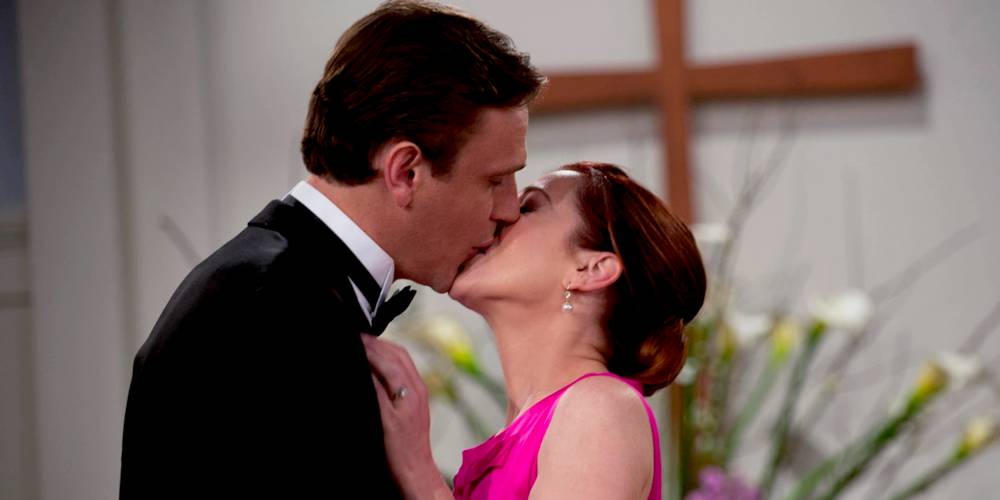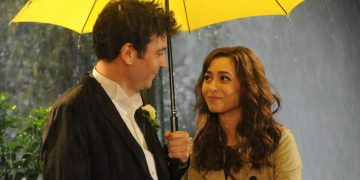It started in theater, but eventually it made its way over to cinema, then finally television. The Lovers—as they've come to be known—continue to persist in entertainment. But what, exactly, are they?
Simply put, The Lovers are two characters who only make sense as a romantic duo. Each one's character development is dependent on the other character, and they fall flat without them.
Their defining trait is that they are in love together. We might learn a few other things about them here and there, but they never grow enough to become their own character.
Here are some of the most iconic examples of The Lovers in cinema and television, which will make this trope abundantly clear.
5. Sandy and Danny (Grease)
Sandy and Danny are the most blatant example of The Lovers. Their entire storyline in Grease revolves around them changing their habits and personalities just to be a better fit for each other.
By the end of the film, the transformation is complete. Danny picks up sports, Sandy picks up smoking; he becomes more reliable, she becomes more easygoing and less prim.
They're supposed to be two individuals going through the major changes of young adulthood, yet all that's central to their storyline is whether they'll be with each other or not.
Of course, there's nothing inherently wrong about this phenomenon of theirs. Romance is important and it's nice to see it on screen.
What's problematic about this particular depiction is how their individual character traits are made obsolete. The screen time they're given is wholly dedicated to their romantic development only. It makes us ask: without each other, are they even characters?
4. Marshall and Lily (How I Met Your Mother)
Marshall and Lily make a nice match—affectionate, united, well-written. There's nothing wrong with them as an on-screen couple. Yet, they're another stark example of The Lovers trope.
Their whole character arc—one arc shared between them—rests solely on one being with the other. They have great chemistry, true, and their heartwarming developments are quite romantic, and you might even say they're meant to be.
Yet, just like every other couple on this list, they exist only to be with each other. Sure, there are moments when they're supporting characters for the protagonists, but even those interactions are often rooted in their identity as one partner to the other.
3. Pam and Jim (The Office)
Oh man, Pam and Jim! What a rollercoaster, right?! Not really. We knew they would end up together eventually; the only question was, when. Apart from their office romance, who are they?
Well, Jim loves pranks and Pam loves art. That's really all we know. We never really spend much time with them as individuals, and their interactions with other characters are rarely meaningful.
Much of their time on The Office is spent courting each other, or recovering from some mishap between them.
2. Rio and Tokyo (Money Heist)
Netflix's Money Heist is a freak show. Addictive and enjoyable, sure, but still an absolute madhouse. And while many things change throughout the show, one remains evergreen to the very end: the romance between Rio and Tokyo.
These two characters were clearly crafted to be together, and this is apparent all the way from the beginning. We can see how their individual traits are left underdeveloped as the writers focus mainly on them as a couple instead.
We know very little about them despite them being central to the show. Tokyo has a dark past and an unbalanced personality, Rio is considerably younger than her and he's tech-savvy. That's it.
Everything else about them always touches on their shared love story—every line, every gesture, every plot and character development. Tokyo and Rio only make sense in relation to each other.
This type of character pairing is often the most beloved by audiences because the romantic tension is an easy source of sustained suspense. But take a step back and you see that their interactions are either irrelevant to the main plot or triggers for conflict (i.e. plot fuel).
1. Romeo and Juliet (Romeo and Juliet)
Romeo and Juliet aren't just the archetype for The Lovers trope. They are, at least in Western culture, one of the most famous couples in literature, cinema, and television. And for good reason!
The love story between Romeo and Juliet is romantic, pure, and tragic. It shaped how love is depicted in pop culture, and one could even say that they started the entire trope.
The entire plot of Romeo and Juliet revolves around their love for each other, not around them as people.
I don't mean to imply that this kind of plotline is shallow, or that there's necessarily something wrong with it. All I mean is that, when it comes to the trope of The Lovers, the phenomenon started here.




